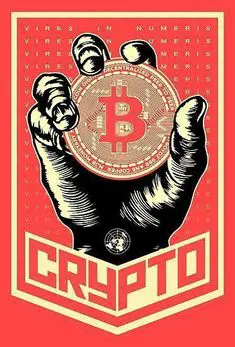
Unveiling Cryptocurrency Market Trends: Navigating the Ever-Evolving Landscape
- Admin
The cryptocurrency market is a dynamic and ever-evolving ecosystem, characterized by rapid innovation, regulatory shifts, and changing investor sentiment. Understanding the prevailing trends in this space is crucial for investors and traders looking to capitalize on emerging opportunities and navigate potential risks. In this article, we'll explore some of the key cryptocurrency market trends shaping the industry and discuss their implications for market participants.
1. Institutional Adoption:
One of the most significant trends in the cryptocurrency market is the increasing adoption by institutional investors and traditional financial institutions. Institutional players, including hedge funds, asset managers, and investment banks, are recognizing the potential of cryptocurrencies as an asset class and are allocating capital to digital assets. This influx of institutional money is driving liquidity, reducing volatility, and bringing greater legitimacy to the cryptocurrency market.
2. Decentralized Finance (DeFi):
Decentralized finance, or DeFi, is another major trend reshaping the cryptocurrency landscape. DeFi platforms leverage blockchain technology to provide financial services such as lending, borrowing, trading, and asset management without the need for traditional intermediaries like banks or brokers. The explosive growth of DeFi has unlocked new possibilities for financial inclusion, innovation, and yield generation in the cryptocurrency market.
3. Non-Fungible Tokens (NFTs):
Non-fungible tokens (NFTs) have surged in popularity, representing another notable trend in the cryptocurrency market. NFTs are unique digital assets that represent ownership or proof of authenticity of a specific item or piece of content, such as artwork, collectibles, or virtual real estate. The booming NFT market has created new opportunities for creators, collectors, and investors, with multimillion-dollar sales and high-profile auctions grabbing headlines.
4. Regulatory Developments:
Regulatory developments continue to play a significant role in shaping the cryptocurrency market. Governments and regulatory bodies around the world are grappling with how to regulate cryptocurrencies, ICOs, DeFi platforms, and other crypto-related activities. Regulatory clarity or uncertainty can have a profound impact on market sentiment, investor confidence, and the adoption of cryptocurrencies, making it essential for market participants to stay informed about regulatory developments.
5. Environmental Concerns:
Environmental sustainability has emerged as a growing concern in the cryptocurrency market, particularly regarding the energy consumption associated with blockchain networks like Bitcoin. Critics argue that the energy-intensive proof-of-work consensus mechanism used by some cryptocurrencies is environmentally unsustainable and contributes to carbon emissions. In response, there is growing interest in alternative consensus mechanisms, such as proof-of-stake, which consume less energy.
6. Integration of Central Bank Digital Currencies (CBDCs):
Central bank digital currencies (CBDCs) represent a significant trend in the cryptocurrency market, with several countries exploring the development and implementation of their own digital currencies. CBDCs have the potential to revolutionize the financial system by enabling faster, cheaper, and more inclusive payments, while also posing challenges to the existing financial infrastructure and the role of traditional banks.
Conclusion:
The cryptocurrency market is constantly evolving, driven by a myriad of trends, innovations, and regulatory developments. Understanding and adapting to these trends is essential for investors and traders seeking to navigate the dynamic landscape of digital assets successfully. By staying informed, conducting thorough research, and remaining vigilant about emerging trends, market participants can position themselves to capitalize on opportunities and mitigate risks in the ever-changing world of cryptocurrencies.
